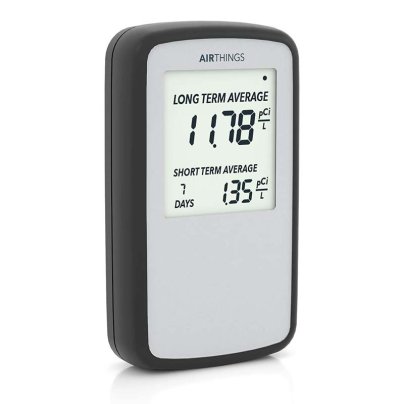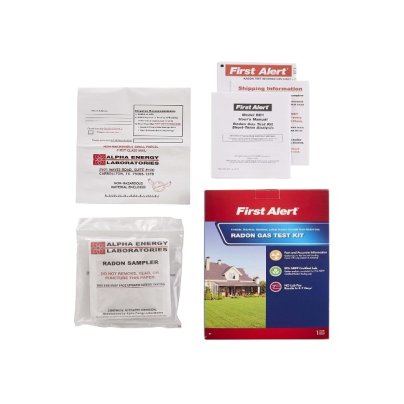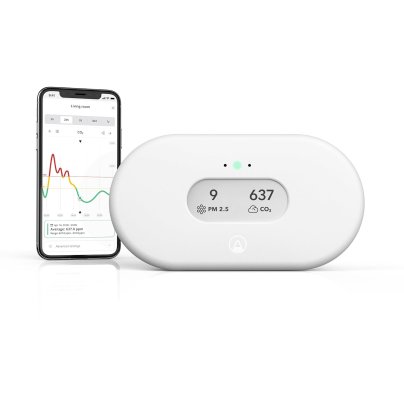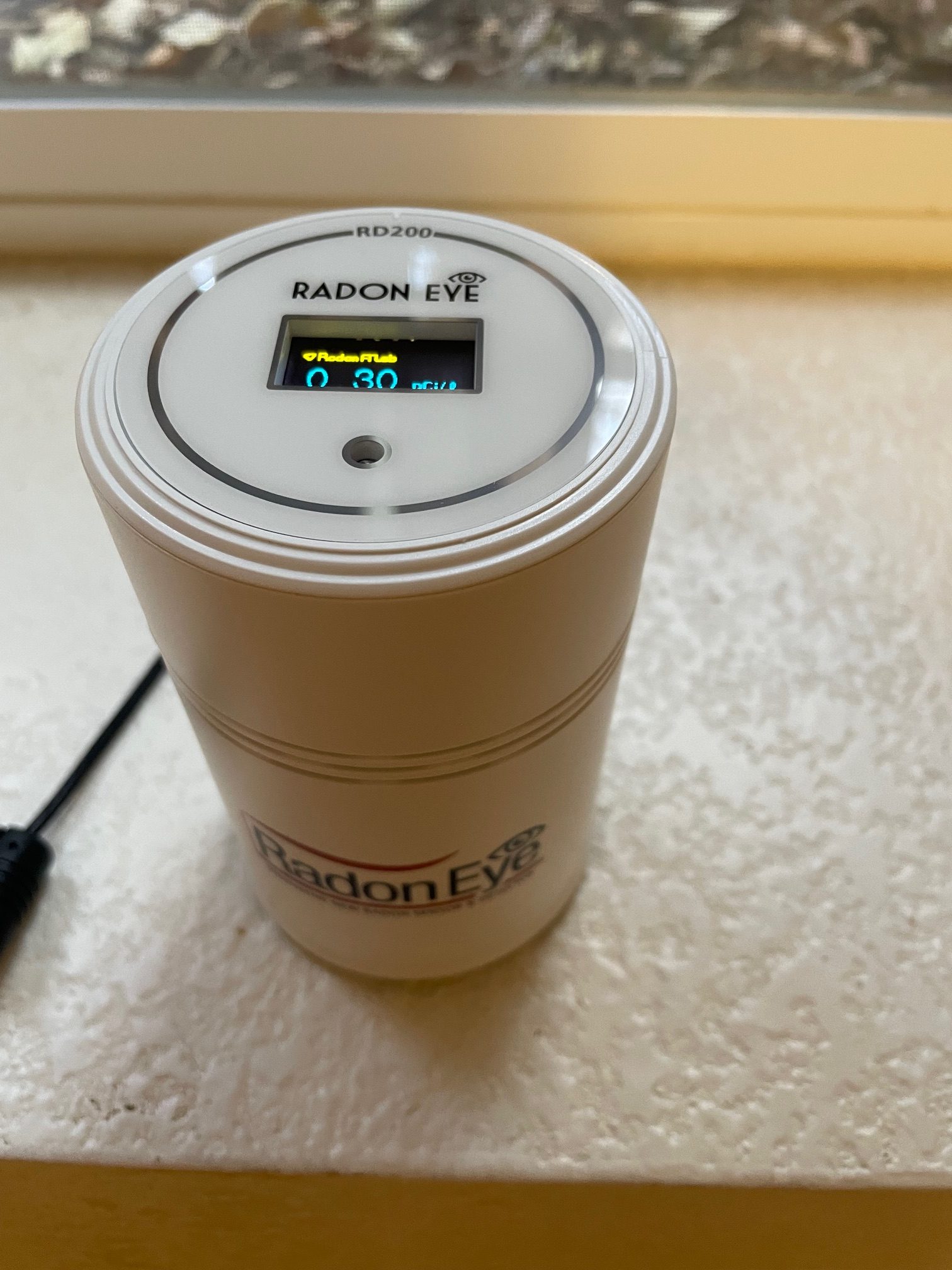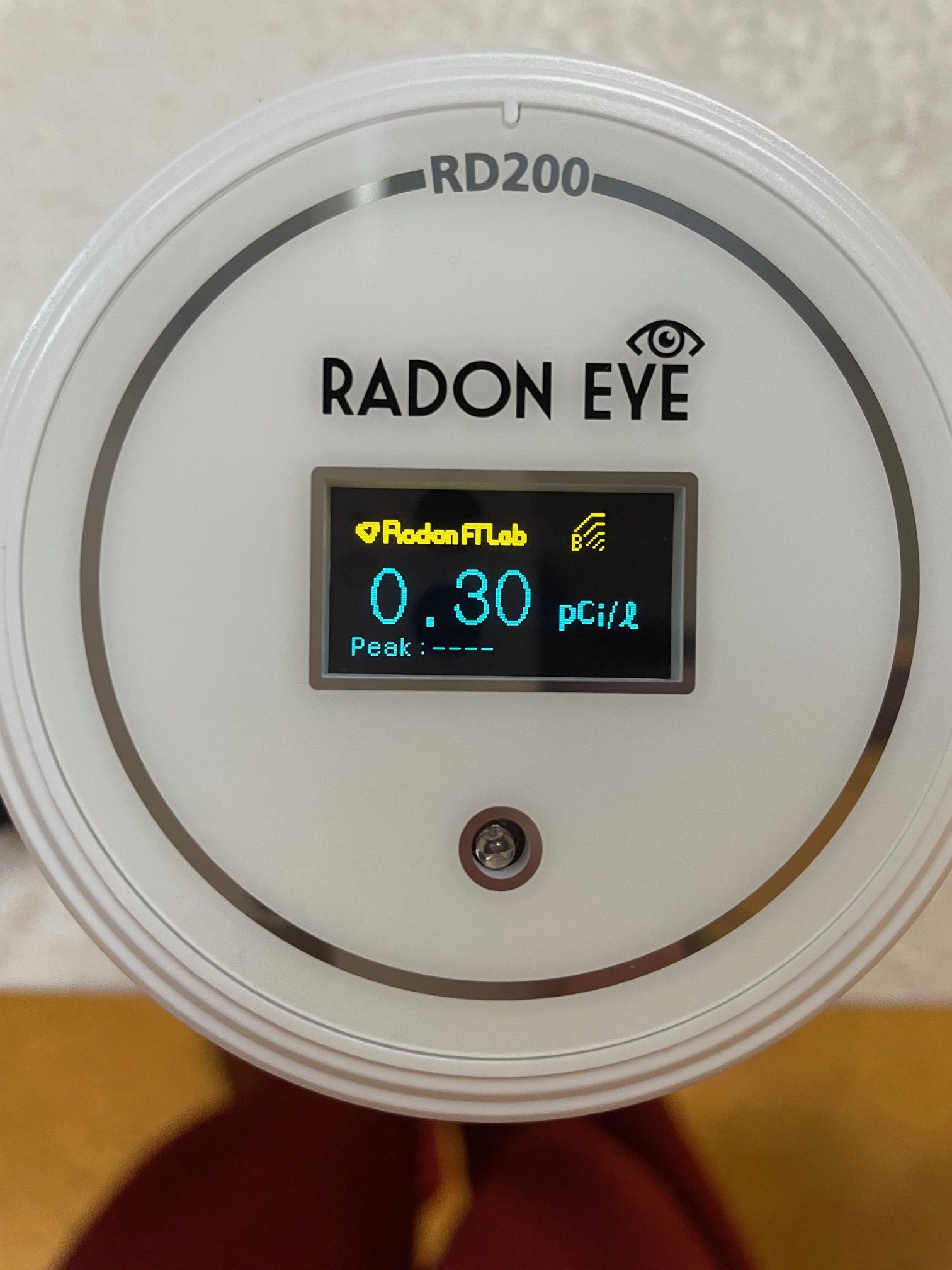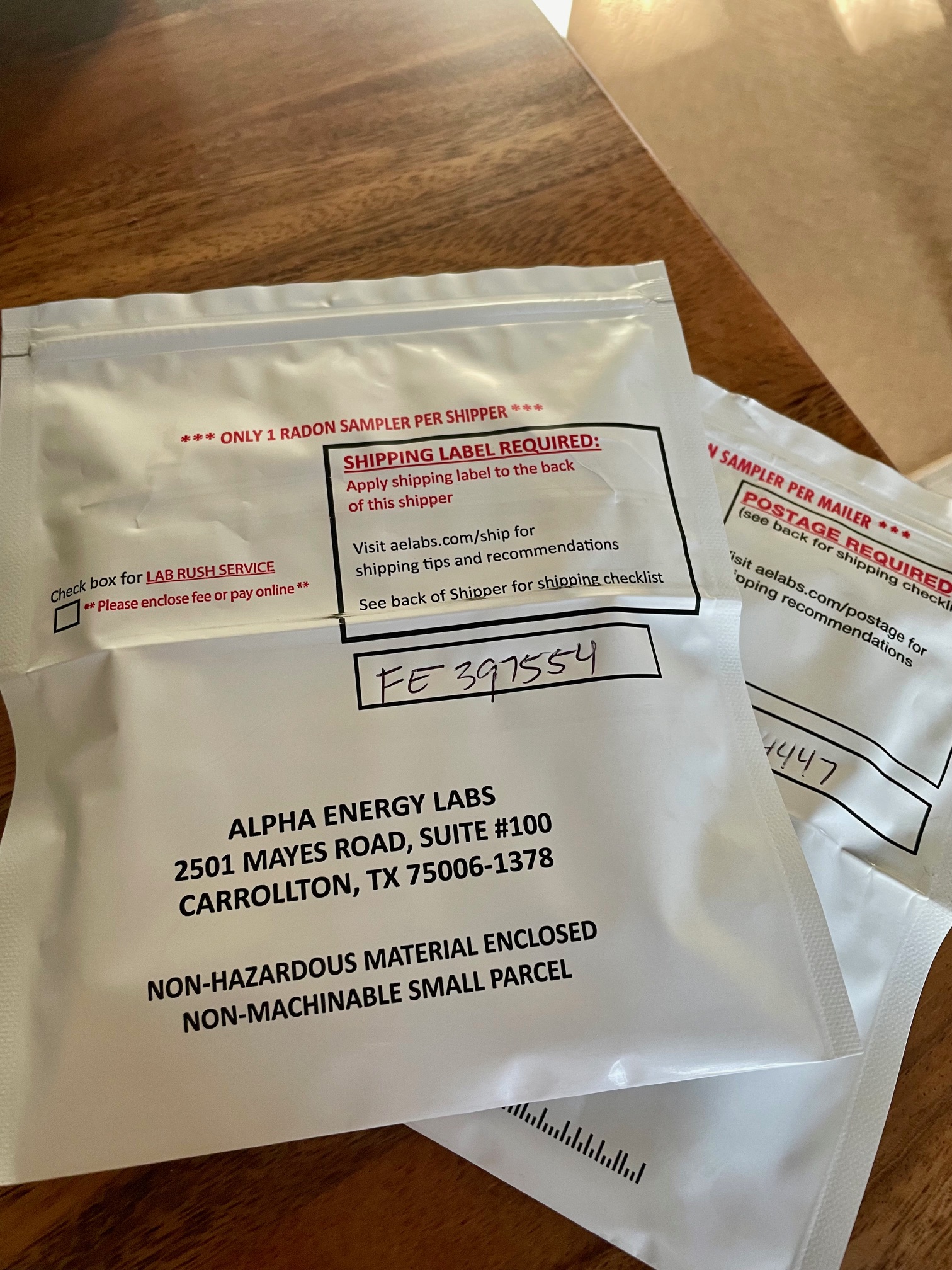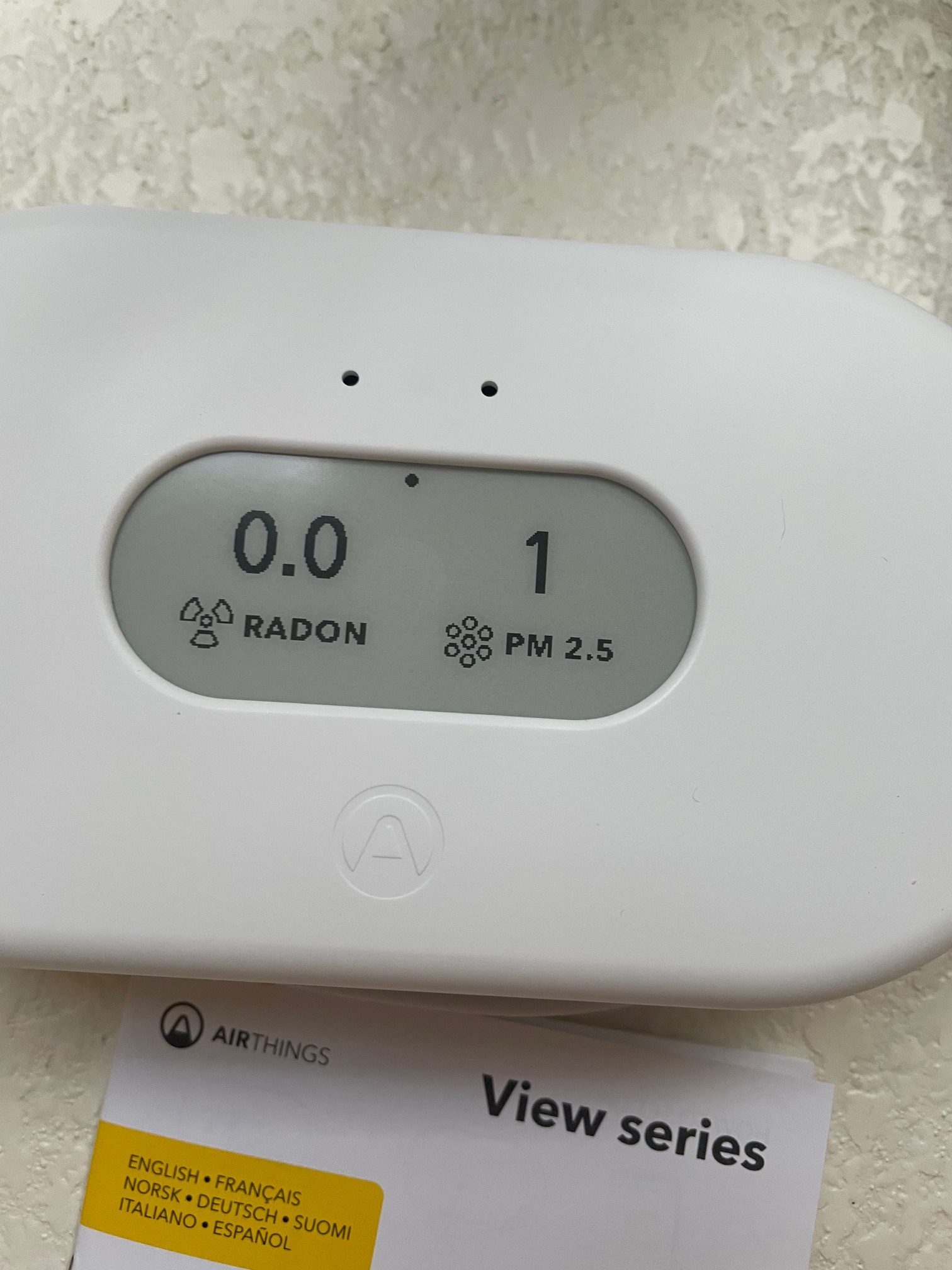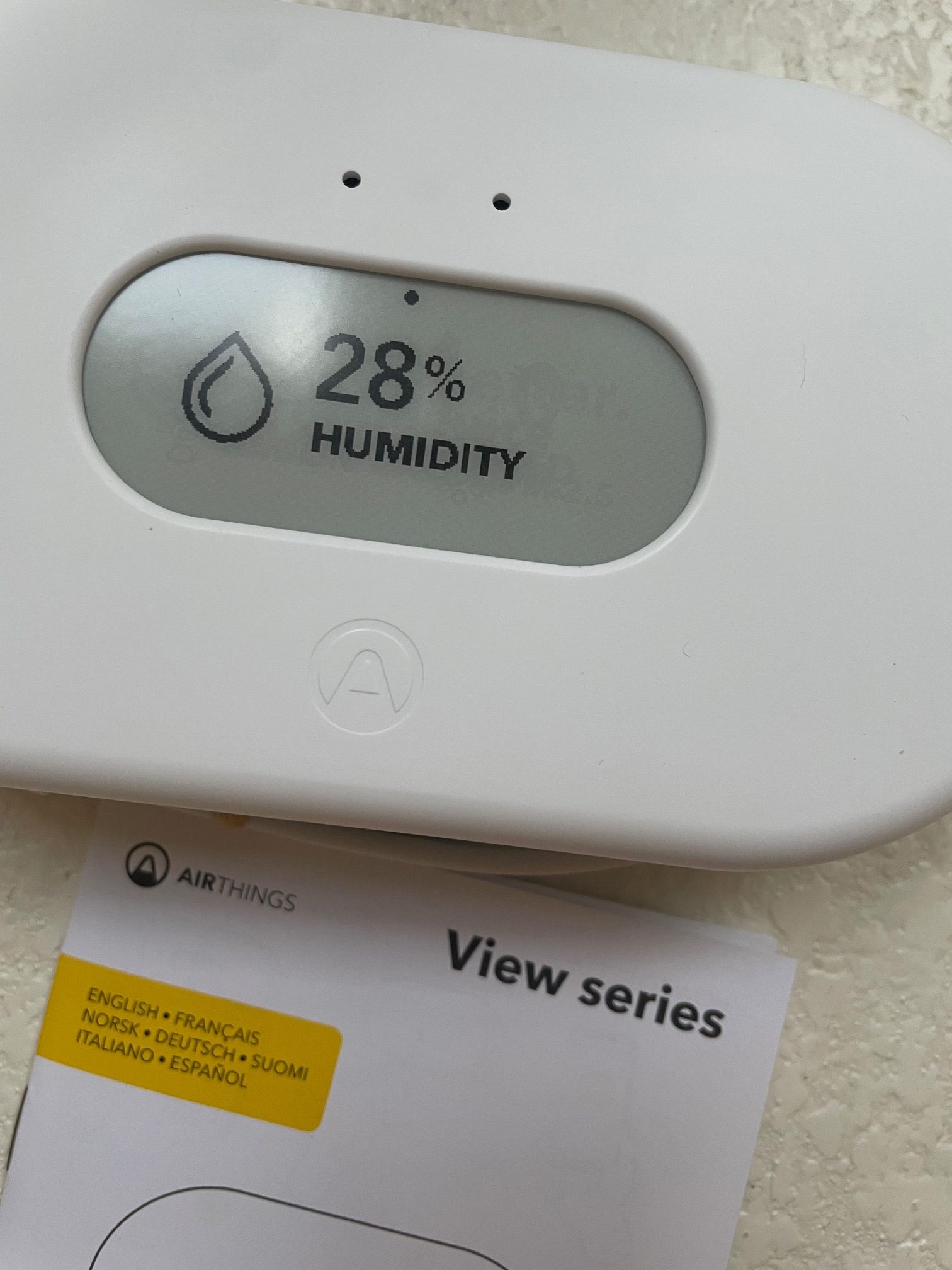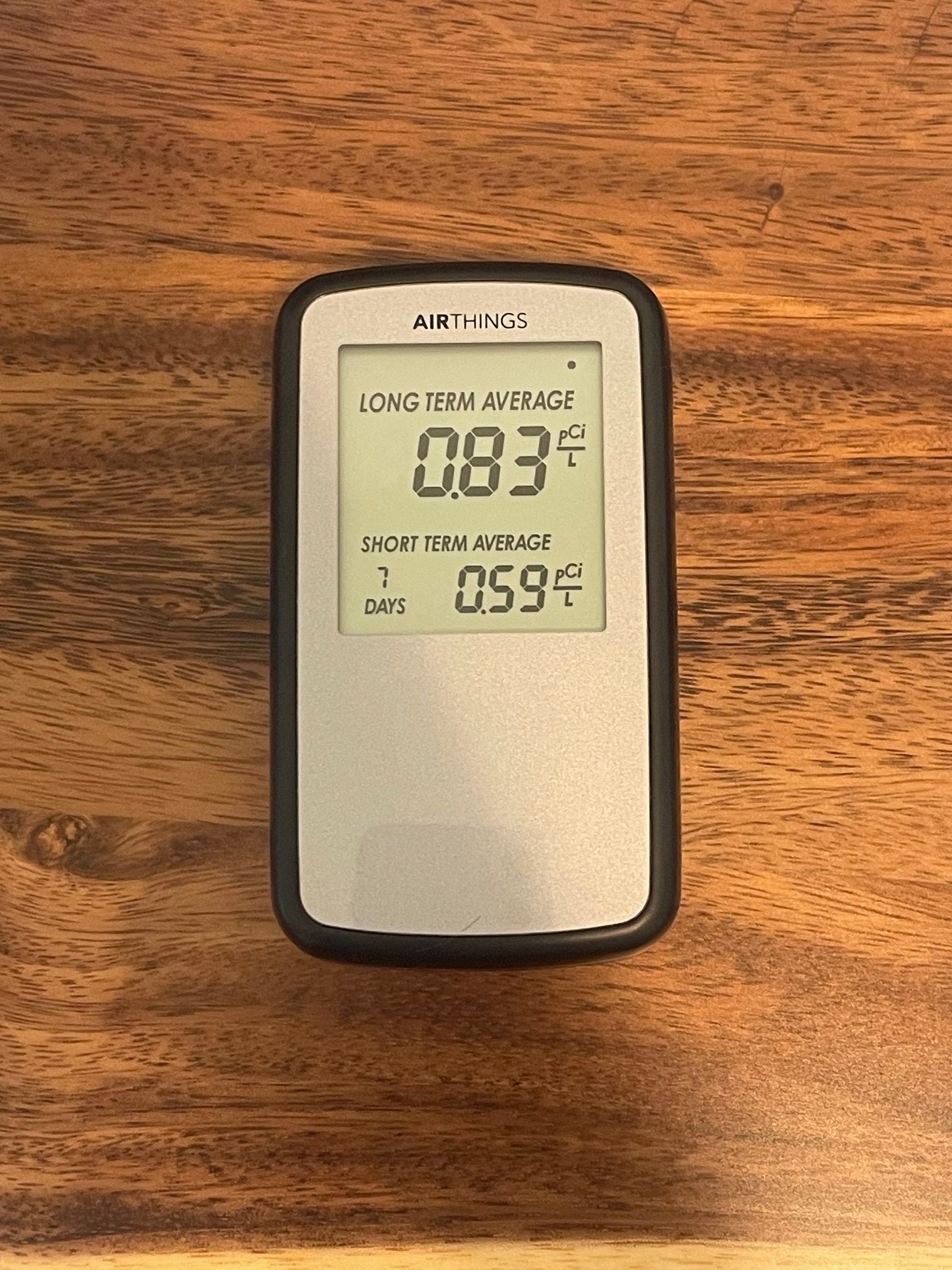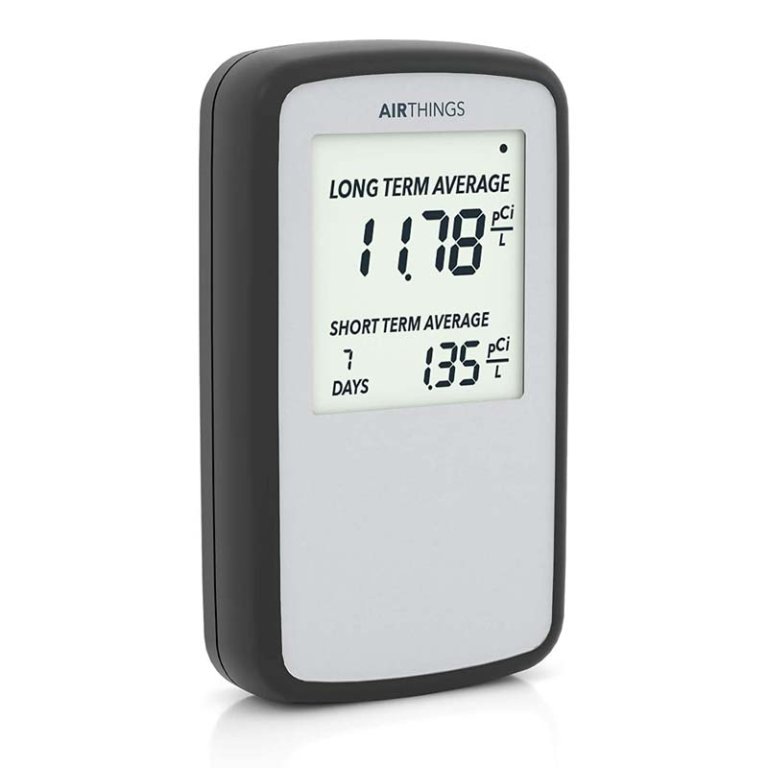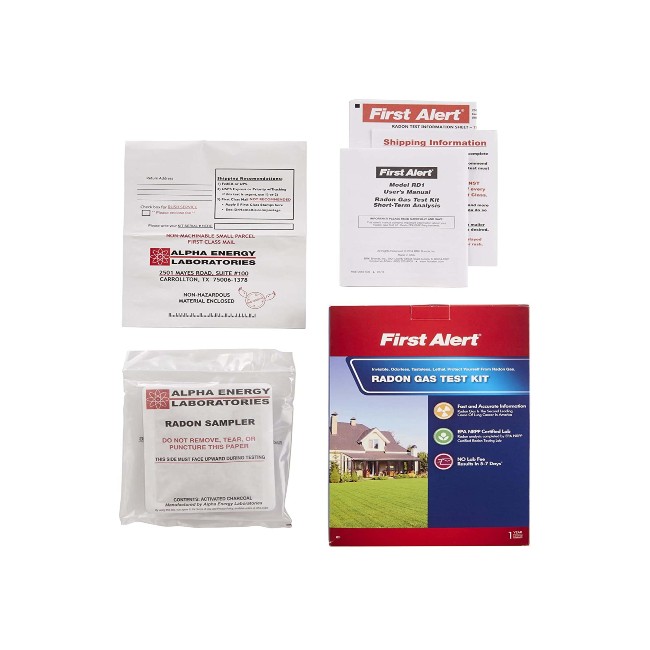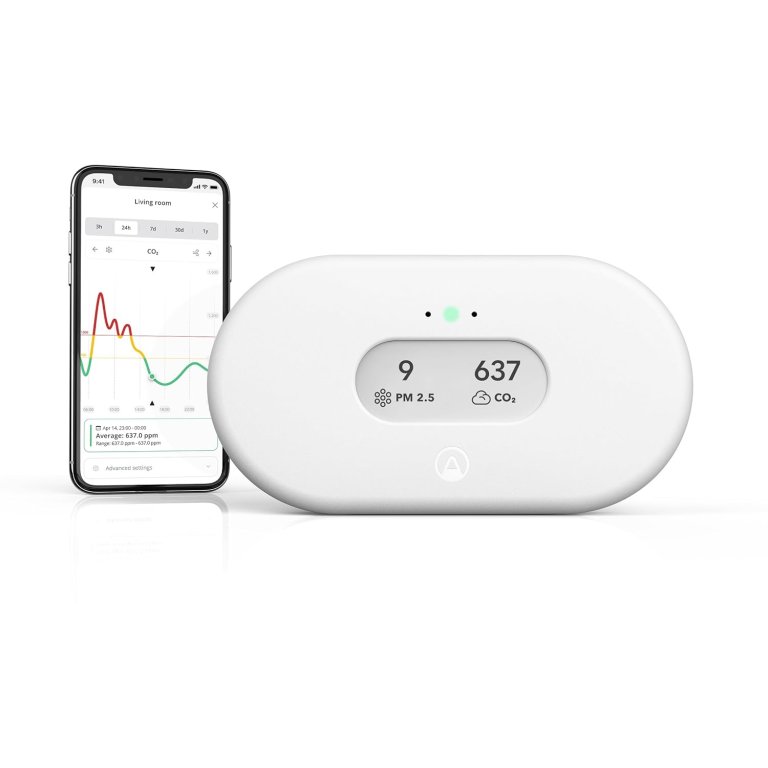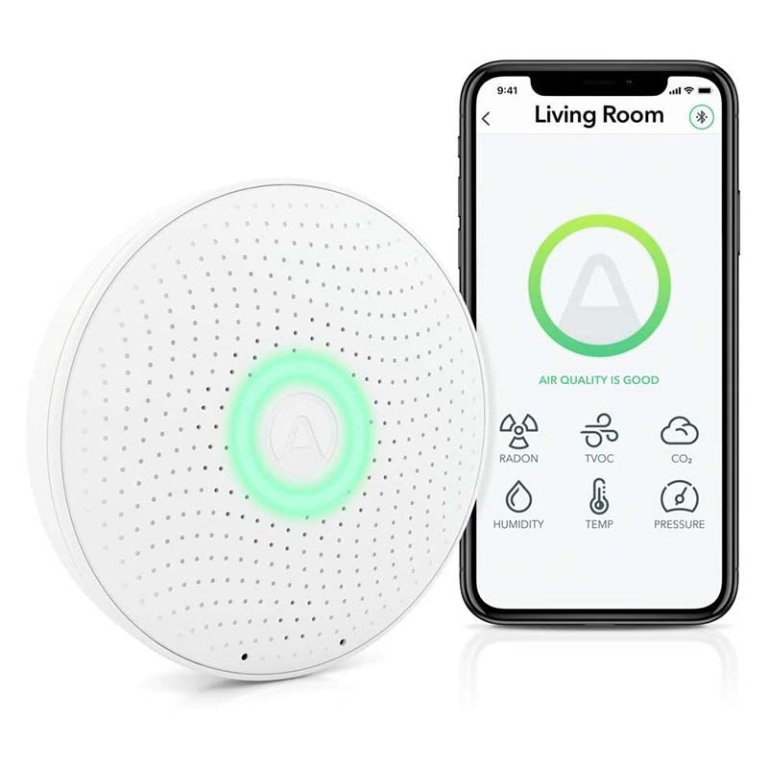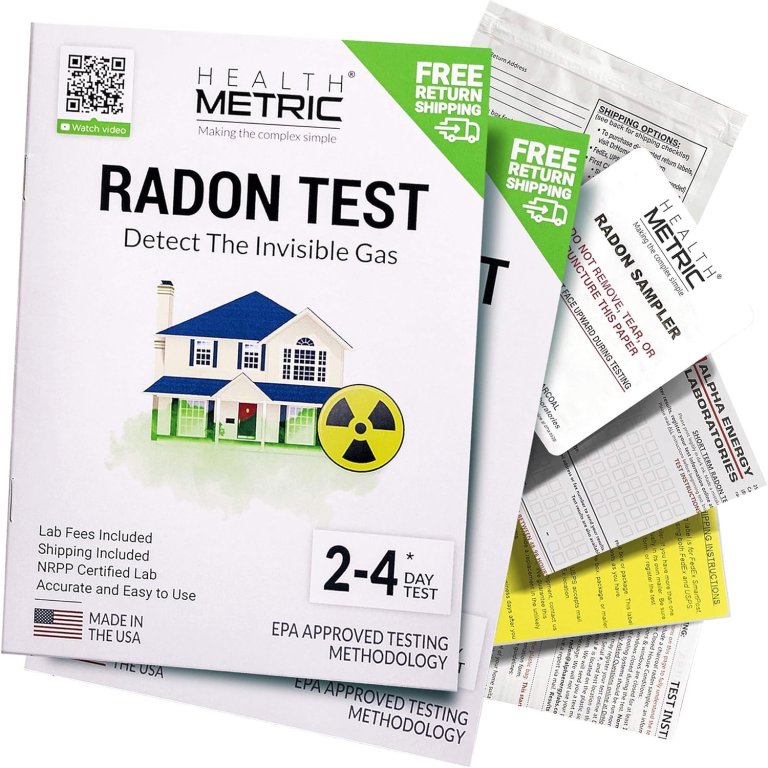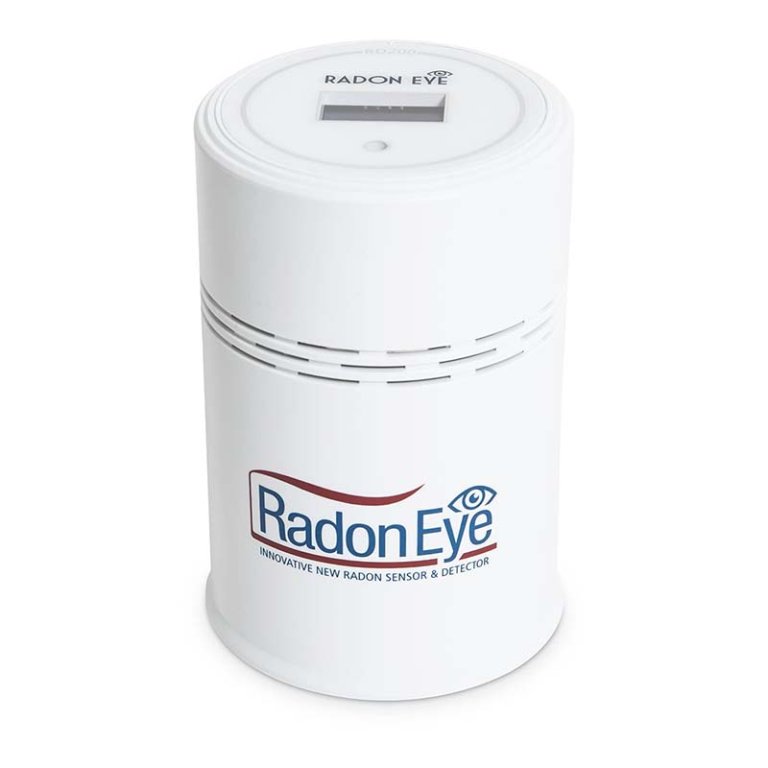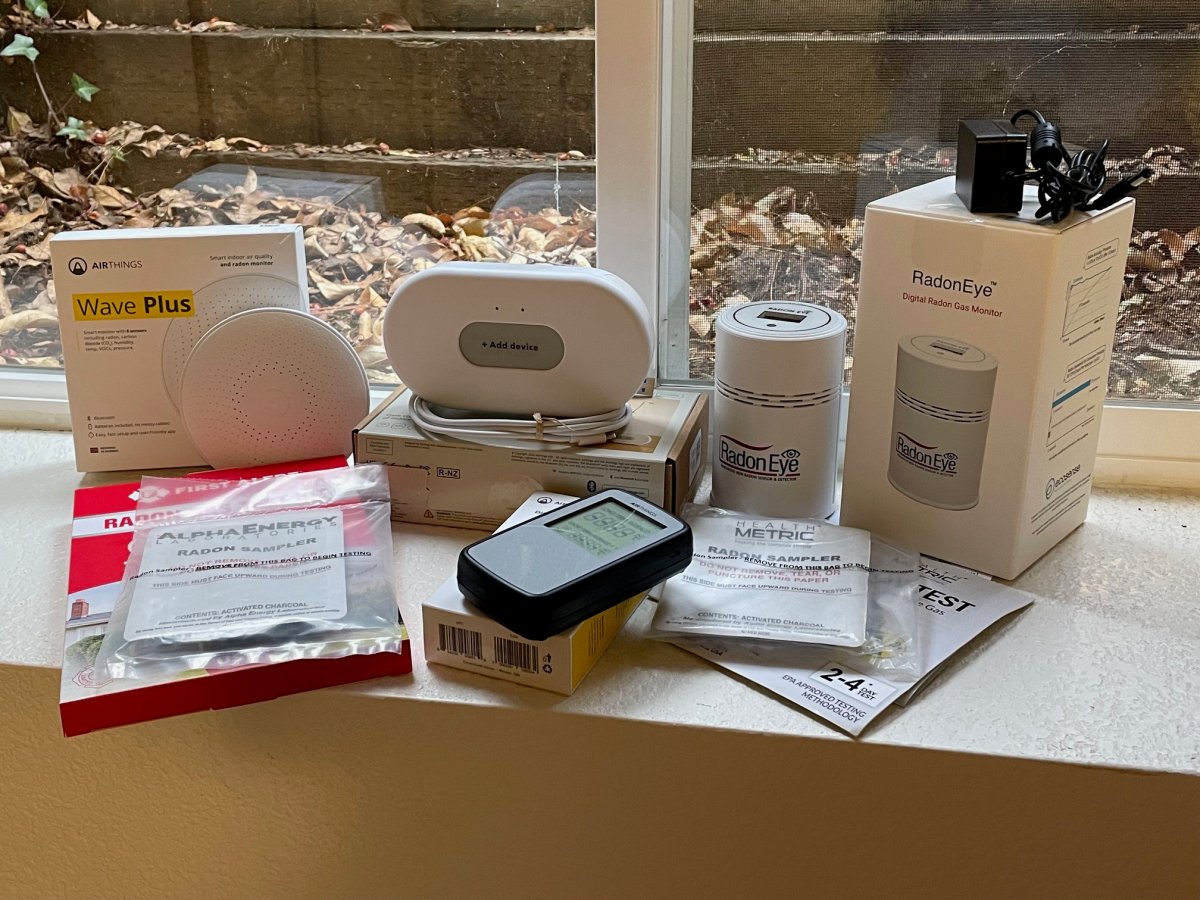
We may earn revenue from the products available on this page and participate in affiliate programs. Learn More ›
Radon test kits detect the presence of radon gas, a byproduct of uranium decay in rock and soil. Radon can enter homes by seeping through cracks in the foundation, slowly accumulating until it reaches dangerous levels. Prolonged exposure to this harmful gas can cause health issues like headaches or even cancer.
Radon is tasteless, odorless, and colorless, making it undetectable without specialized radon testing equipment. These interior safety devices measure radon levels in picocuries per liter (pCi/L) over the course of a few days or months or provide continuous monitoring. Since no level of radon exposure is considered safe, knowing which radon sensor you can rely on is essential.
After tapping a home safety expert for insights and testing several popular options, we chose the Airthings Corentium Home Radon Detector as the best radon test kit. It’s portable, has an easy-to-read screen, and takes multiple measurements to capture trends. Below, we detail what we like and don’t like about this product and the rest of our picks so you can choose one of the best radon test kits to keep your family safe.
- BEST OVERALL: Airthings Corentium Home Radon Detector
↓Jump to Review - BEST BANG FOR THE BUCK: First Alert RD1 Radon Test Kit
↓Jump to Review - UPGRADE PICK: Airthings View Plus Smart Air Quality & Radon Monitor
↓Jump to Review - BEST SMART: Airthings Wave Plus Smart Radon Detector
↓Jump to Review - BEST SHORT-TERM: Health Metric Charcoal Radon Test Kit
↓Jump to Review - BEST LONG-TERM: Ecosense RadonEye Radon Sensor & Detector
↓Jump to Review
Radon Test Kits Comparison Chart
| Product Name | Type | Results | Portability |
| Airthings Corentium Home Radon Detector | Battery-operated device | On device | Portable |
| First Alert RD1 Radon Test Kit | 1-time test kit | Lab provided | Portable |
| Airthings View Plus Smart Air Quality & Radon Monitor | Battery- or USB-powered smart device | In app and on device | Portable; mounts to wall |
| Airthings Wave Plus Smart Radon Detector | Battery-operated smart device | In app and on device | Portable; mounts to wall or ceiling |
| Health Metric Charcoal Radon Test Kit | 1-time test kit | Lab provided | Portable |
| Ecosense RadonEye Radon Sensor & Detector | Plug-in device | In app and on device | Portable but requires outlet |
Our Top Picks
After researching dozens of radon test kits and testing a few, we recommend the following six options for their ease of use, accuracy, and value.
Best Overall
Airthings Corentium Home Radon Detector
Buy at Amazon Buy at Ace Hardware Buy at WalmartWhat We Like
- First results shown on screen within 24 hours
- Lightweight and portable
- Displays both long- and short-term readings
What We Don’t Like
- Doesn’t measure anything other than radon
Specs
- Type: Battery-operated device
- Results: Instant on device
- Portability: Portable
Our Ratings: Ease of Use 5/5; Accuracy 4.8/5; Value 5/5
The Corentium Home radon detector kit by Airthings is one of the first continuous radon test kits to use batteries, allowing you to take it into any space that needs testing. The clear digital display provides both long- and short-term radon levels, revealing daily fluctuations as well as overall averages. Once you’ve tested your home for at least 30 days, you can generate a free self-inspection report through the Airthings website.
To set up this radon detector, we simply removed a plastic tab and allowed it to calibrate. The device began providing readings in less than 24 hours, though the manufacturer recommends waiting at least 20 days before taking action if levels appear high. This waiting period provides plenty of time for results to stabilize, so you know your readings are reliable. If you want to test another area after your first test is complete, simply reset the unit and move it to the new location.
This is an economical yet accurate option for quick results and long-term testing. It was one of the easiest options to set up, delivered initial results in a day, and comes at a reasonable price for those needing ongoing readings.
What our tester says: “This radon detector makes it so easy to measure radon levels that it’s hard to imagine going with another option—unless you need a one-time test or other air quality measurements. For long-term radon levels, though, this is my pick, hands-down.”—Michelle Larson, Product Reviews tester and writer
Get the Airthings Corentium Home radon test kit at Amazon, Ace Hardware, Walmart, or Airthings.
Best Bang for the Buck
First Alert RD1 Radon Test Kit
Buy at Amazon Buy at Lowe's Buy at First AlertWhat We Like
- Listed under the EPA’s Radon Gas Measurement Proficiency Program
- Low price includes lab fees in most states
- Results emailed 3 to 5 business days after receipt
What We Don’t Like
- Can only be used once
- You have to stay on top of timing
Specs
- Type: 1-time test kit
- Results: Lab provided
- Portability: N/A
Our Ratings: Ease of Use 4.3/5; Accuracy 4.5/5; Value 5/5
The First Alert RD1 home radon test kit is a simple and effective way to detect dangerous radon gas in your home. It essentially functions as a disposable radon detector that you let sit for 2 to 4 days and then send away for results. Results are emailed 3 to 5 days after receipt.
This test was incredibly easy to use, but we strongly recommend you read the included instructions since they cover a couple of integral steps. First, you can’t leave the kit in the testing area for more than 7 days, and second, the kit must arrive at the lab within 10 days of testing. While these steps aren’t difficult, they require you to keep track of how much time has passed—something that can be challenging on busy days. Still, the lab returned results quickly, and the price and accuracy of this radon detection kit are hard to beat for those looking for a one-time, short-term test.
Get the First Alert radon test kit at Amazon, Lowe’s, or First Alert.
Upgrade Pick
Airthings View Plus Smart Air Quality & Radon Monitor
Buy at Amazon Buy at AirthingsWhat We Like
- Wi-Fi and Bluetooth connectivity
- Detects a wide range of pollutants and irritants
- Data available on unit, app, and Airthings website
What We Don’t Like
- Premium price if all you need are radon levels
Specs
- Type: Battery- or USB-powered smart device
- Results: Instant in app and on device
- Portability: Portable; mounts to wall
Our Ratings: Ease of Use 4.5/5; Accuracy 4.5/5; Value 4.5/5
This smart monitor from Airthings makes it easy to check levels of radon, PM2.5 (particulate matter), carbon dioxide (CO2), volatile organic compounds (VOCs), temperature, air pressure, and humidity. It also provides pollen forecasts so those with allergies can stay informed about outdoor conditions. As a continuous radon monitor, this unit has its own display showing current levels, and users can also check the app or Airthings website for long-term readings. It also features a visual indicator with green, yellow, and red status lights for at-a-glance monitoring.
The View Plus is compatible with IFTTT, Homey, Google Assistant, and Amazon Alexa and runs via batteries or the included USB-C cable. You can place it virtually anywhere indoors to test levels in multiple locations or mount it to the wall to ensure continually safe radon levels in a basement.
For a comprehensive overview of air quality in your home, the AirThings View Plus is a great option. It provides more readings than any other option we tested, and the results were accurate after just 7 days of calibration.
Get the Airthings View Plus radon test kit at Amazon or Airthings.
Best Smart
Airthings Wave Plus Smart Radon Detector
Buy at Amazon Buy at The Home DepotWhat We Like
- Provides continuous results via Bluetooth
- Monitors radon, CO2, VOCs, humidity, temperature, and air pressure
- Visual indicator shows current air quality
What We Don’t Like
- Full calibration takes 30 days
Specs
- Type: Battery-operated smart device
- Results: Instant in app and on device
- Portability: Portable; mounts to wall or ceiling
Our Ratings: Ease of Use 4.3/5; Accuracy 4/5; Value 4/5
While the Airthings Wave Plus radon and air quality monitor is on the spendy side, it also tests a lot more than just radon. Once set up, this unit provides continuous readings for radon gas buildup, CO2, VOCs, humidity, temperature, and air pressure. Just be aware that the calibration process takes a full 30 days.
The Wave Plus radon gas monitor runs on batteries and is easy to mount on a wall or ceiling. Its on-unit color-coded display indicates whether air quality is good (green), fair (yellow), or bad (red). It pairs with the Airthings app via Bluetooth for real-time reading and tips on how to improve indoor air quality.
We tested the Wave Plus in a home where radon was previously detected and is being treated. Because of the known radon issue, the homeowners have a professional radon detector, so we were able to compare the readings of the Wave Plus with their professional model. We positioned it in the basement of the home and left it there for a week.
Upon our return, we checked the Airthings app and found a radon reading of 3.5pCi/L—exactly what the professional radon detector was showing. When we took the Wave Plus outside in the fresh air, the radon level dropped, and the light turned green to indicate healthy air. We also tested its ability to detect VOCs and CO2. Overall, it’s not just a good radon detector, but also one of the best air quality monitors.
Get the Airthings Wave Plus radon test kit at Amazon or The Home Depot.
Best Short-Term
Health Metric Charcoal Radon Test Kit
Buy at Walmart Buy at AmazonWhat We Like
- Simple to set up
- Results arrive via email in a matter of days
- Price includes lab fees in most states
What We Don’t Like
- May be easy to miss integral steps
- Shipping costs aren’t part of price
Specs
- Type: 1-time test kit
- Results: Lab provided
- Portability: N/A
Our Ratings: Ease of Use 4.3/5; Accuracy 4.5/5; Value 5/5
The Health Metric charcoal radon test is a quick and easy way to measure radon in your home. Simply put the kit in your basement or whichever floor is lowest, wait 2 to 4 days, and send it in using the provided mailer. Shipping costs extra, but lab fees to analyze your results are part of the initial price.
Once the lab receives your kit, which took almost a week during our tests, you’ll receive the results via email in 3 to 5 days. Ours were right on time at 3 days, and we even got a text alerting us they were ready. Like the other mail-in kit we tested, however, you need to stay on top of timing to ensure the validity of your results.
You have to test for at least 2 days, but not more than 7, and the lab needs your kit in hand within 10 days of your stop date. Still, if time management isn’t an issue for you, this inexpensive short-term test is an excellent way to get the information you need.
Get the Health Metric radon test kit at Walmart or Amazon (2-pack with prepaid shipping).
Best Long-Term
Ecosense RadonEye Radon Sensor & Detector
Buy at Amazon Buy at Walmart Buy at EcosenseWhat We Like
- First reading is 90 percent accurate and available in 10 minutes
- Results shown in app and on device
- Tracks short- and long-term readings and trends
What We Don’t Like
- Reads radon levels only
Specs
- Type: Plug-in device
- Results: Instant in app and on device
- Portability: Portable but requires outlet
Our Ratings: Ease of Use 5/5; Accuracy 4.8/5; Value 4.5/5
The EcoSense electronic radon detector takes 30 independent counts of pCi/L levels every hour, and the manufacturer states that it delivers the first reading within 10 minutes of setup. We plugged it in, set it on a flat surface to begin collecting data, and waited for a reading. We also downloaded the RadonEye app, which quickly found and paired with our detection unit. In just 10 minutes, we did indeed have our first reading from this radon gas detector.
Real-time results are displayed on the unit’s OLED screen, and as we checked the app over our 30-day testing period, we saw updated information every 10 minutes alongside our peak value, plus daily and monthly averages. Should peak levels exceed 4 pCi/L, the unit sounds an alarm and sends a notification via the app.
Get the Ecosense radon test kit at Amazon, Walmart, or Ecosense.
Jump to Our Top Picks
How We Tested the Best Radon Test Kits
| Products tested | 6 |
| Time spent testing | 5 months |
| Tests performed | 5 |
| Price range | $15 to $300 |
When gathering products for testing, we primarily considered the most important aspects of radon home kits—accuracy and ease of use. We selected a variety of units that make it simple to test for radon, choosing a few one-time kits that need to be sent to a laboratory as well as several that offer instant access to results via the unit itself or an app.
Based on our initial product research, we selected six radon kits to test and set them together on a shelf in our basement. Each kit remained undisturbed for between 4 days and 30 days, as instructed by the manufacturer. If the kit had a corresponding app, we installed and paired it, and if not, we simply waited the recommended amount of time before mailing it in for results. We then rated each kit based on how easy it was to set up, how accurate its results were, and whether it offered a good value for homeowners looking to test for cancer-causing radon gas.
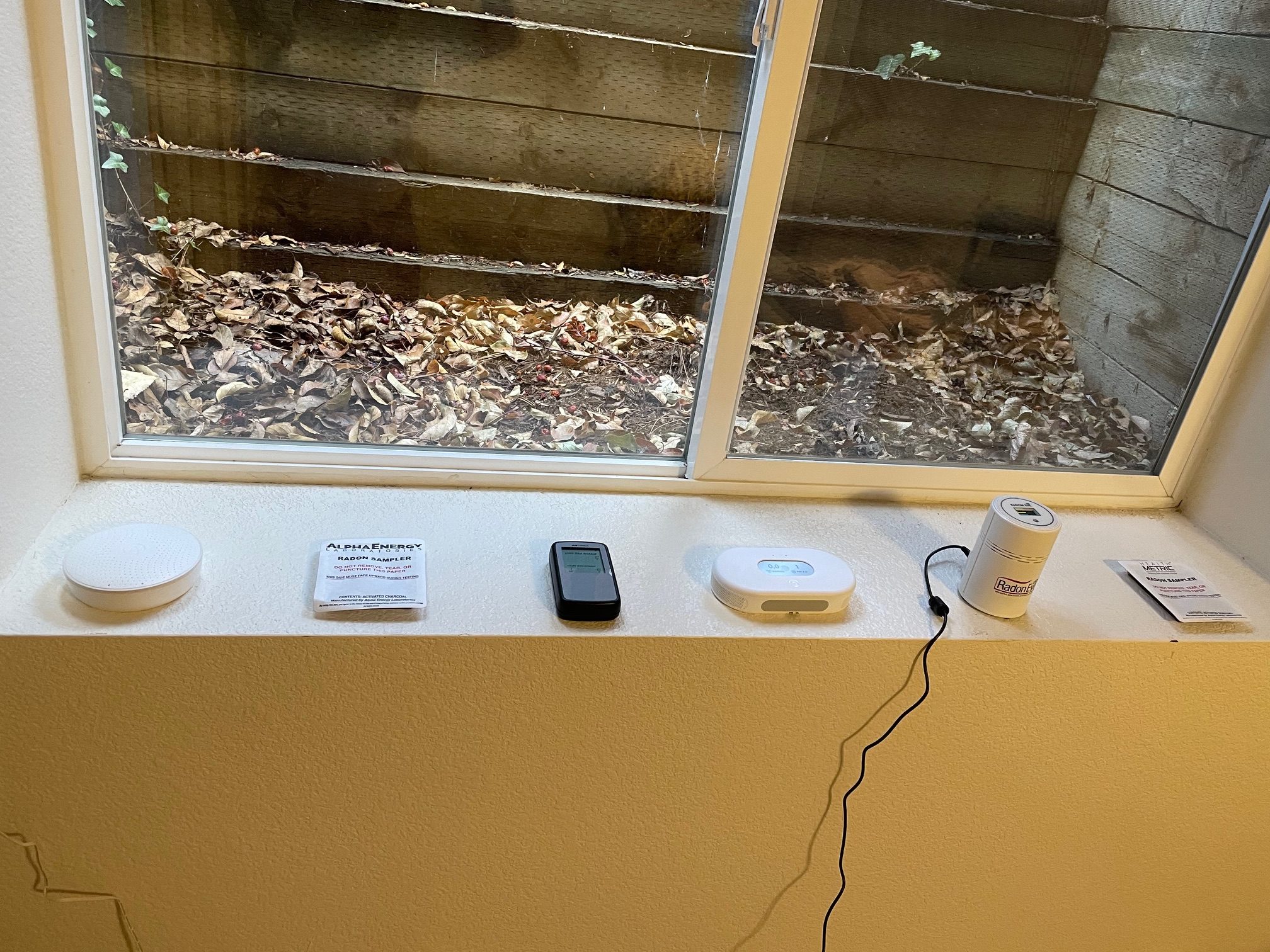
| Ease of Use | Accuracy | Value | |
| Airthings Corentium Home Radon Detector | 5 | 4.75 | 5 |
| First Alert RD1 Radon Test Kit | 4.25 | 4.5 | 5 |
| Airthings View Plus Smart Air Quality & Radon Monitor | 4.5 | 4.5 | 4.5 |
| Airthings Wave Plus Smart Radon Detector | 4.25 | 4 | 4 |
| Health Metric Charcoal Radon Test Kit | 4.25 | 4.5 | 5 |
| Ecosense RadonEye Radon Sensor & Detector | 5 | 4.75 | 4.5 |
What to Consider When Choosing a Radon Test Kit
To select one of the best radon kits for your needs, consider test type, accuracy, ease of use, and installation.
Types of Radon Test Kits
A radon test kit will use one of several methods to test the air in your home for elevated radon levels. Regardless of which type of radon monitor you choose, these helpful devices are the only way to determine your family members’ exposure to this harmful gas other than a professional radon inspection.
Short-Term Radon Test Kits
Radon kits for short-term use collect readings from your home over a 2- to 90-day period and must then be sent to a laboratory for the results to be read. The lab fees necessary for proper testing are likely included with your purchase, though shipping generally costs extra.
Because short-term radon test kits are the fastest and least expensive test option, real estate agents often use them to check for safe radon levels before selling a home. However, since radon levels fluctuate, short-term test kits are not the most accurate testing method. For definitive results, long-term testing is necessary.
Long-Term Radon Test Kits
As their name indicates, long-term radon test kits are designed to test levels of radon gas over a longer period, such as weeks, months, or years. Like short-term tests, some are single-use devices that must be sent to a laboratory to be read, though others have screens or Bluetooth connectivity that allows you to monitor levels yourself.
Since a long-term radon test kit collects a greater volume of data, periodic spikes that naturally occur are less likely to raise unnecessary alarms, which may happen with more limited readings. The downside of this type of detector is that it will typically be more expensive than a one-time use or short-term kit and may not be necessary if radon levels are consistently lower than 4 pCi/L.
Alpha-Track Radon Test Kits
The alpha-track radon test kit is a long-term test that measures levels of radon using polycarbonate plastic sheets placed in the lowest livable level of the home. If radon gas is present, it will emit alpha particles that create tracks on these sheets, with higher levels of gas producing greater numbers of tracks. Once the test kit has collected data for the suggested amount of time, it is sent in to be read. Generally speaking, alpha-track tests are more accurate than short-term test kits but don’t provide the ongoing measurements offered by long-term detectors.
Charcoal Radon Test Kits
Charcoal radon test kits are short-term options that work similarly to alpha-track units, though they use charcoal rather than polycarbonate plastic to measure levels. Generally speaking, they’re also cheaper and faster since they only monitor radon gas for between 2 and 90 days. For this reason, they are less accurate since they are susceptible to radon spikes and possible interference during shipping.
Digital Radon Test Kits
Digital radon test kits are also known as radon detectors or radon gas monitors, and they are the most expensive type of radon tester for home use. Most digital units can be mounted to the wall or ceiling, or simply placed in the lowest level of the house.
However, installation requirements typically extend well beyond mounting, as most of these kits use Bluetooth connectivity to deliver detailed readings to an app. Some digital kits also offer recent readings directly on the test unit, though their screens aren’t often large enough to display the long-term data that makes digital tests so valuable. Further adding to their worth, many digital kits also test home air quality levels of humidity, carbon dioxide, volatile organic compounds, and more.
Accuracy
Accuracy is one of the most important factors to consider when choosing a radon test. Generally speaking, the longer a radon test kit collects data, the more accurate the results will be. This is because increased testing time allows you to determine average pCi/L levels without the influence of random positive or negative spikes.
Since short-term radon tests are susceptible to spikes in radon levels that can skew the average, they are considered the least accurate test option. Because they collect more data, long-term and continuous tests are the most accurate radon test kits available.
Ease of Use and Installation
Radon test kits are designed to be easy to use, both for the consumer’s benefit and to ensure accurate results. Passive radon test kits, like charcoal and alpha-track test kits, are easy to set up but must be sent to a lab for results. On the other hand, active radon test kits, like digital radon detectors, are a bit more involved in setup but relatively easy to use after that. More advanced smart detectors require additional technical know-how for ongoing use. It’s a good idea to consider your radon testing needs and comfort using technology before selecting a test kit.
FAQs
The following section can help answer questions like, “What is radon testing?” or “How much does a radon mitigation system cost?”
Radon tests work by measuring the amount of radon in the air. Charcoal devices absorb radon, enabling lab techs to count radioactive particles to estimate levels. Alpha-track kits must also be read in labs, but they use a plastic film that produces marks when radon gas strikes it. Digital detectors have sensors that detect and count alpha particles before displaying them on the device or in an app.
Radon test kits are generally used by opening a sealed package and leaving the test kit exposed to the air for a certain amount of time. Some must be sent in to be read, while others provide measurements you can access yourself.
Radon tests should be placed on the lowest occupied level of the home. Most manufacturers recommend setting them on a surface a few feet off the floor or mounting them to a wall so they won’t be accidentally disturbed or knocked over by kids or pets.
If a test reveals high levels of radon in your home, contact a qualified radon mitigation contractor. They can provide an estimate for installing a radon mitigation system that will continually remove excess radon from your home.
While buildings and homes on hillsides may be more likely to be affected by radon, any structure can be subject to radon contamination. Kevin Feak, Senior Fire Protection Engineer for the architecture and planning firm LaBella, says, “Radon is heavier than room air and will move to the lowest area. Areas below ground level, such as basements or crawl spaces, are at the highest risk.”
The Environmental Protection Agency (EPA) guide to radon recommends testing for radon at least every 2 years. The EPA also suggests testing if you renovate your home or are considering selling it, as you will need to provide test results to the buyer.
According to licensed Professional Engineer Kevin Feak, “The first step in determining your radon risk is to use the EPA’s Radon Zone Map. The second step is testing for radon with either a home test or calling a professional. Lastly, a mitigation system can be used to remove radon from your home or business.”
Different types of home radon test kits have different levels of reliability, with long-term tests being the most reliable and short-term tests being less reliable. Still, since short-term tests are typically less expensive, using them to perform more frequent tests over time can be an economical way to measure radon levels.
Meet the Tester
Michelle Larson is a health- and home-focused writer with over a decade of experience. She specializes in testing and reviewing products that help homeowners and other DIY novices get projects done quickly and well, even if they’re also figuring things out as they go.
Additional research provided by Timothy Dale.
